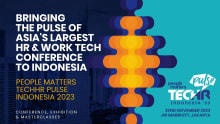Analytics can be a game-changer

Can a few complex analytical models predict human behavior? Does human behavior really follow a trend, and do we actually capture data that is indicative of human behavior?
These were the few pertinent questions that came to my mind when I sat down to write this article. Undoubtedly, human brain is the most complex machine that we see, and to mirror the behavior of that machine is difficult because each one of us is individualistic in behavior, existence and reactions.
Being an ardent fan of Analytics and its real time applications, I would tend to believe that it gives us all the answers within good confidence interval to all questions in people analytics. The data that we have across years, organizations, teams, individuals should throw up some real insightful findings. Then where does the problem lie?
First, do we really capture the data that has picked characteristics of human behavior or it’s just transaction level data (Tenure, Leaves, Vacations, Awards, Promotions, Training hours) that is being used to build the models around people analytics?
Second, are the analytical models being used by the HR team and are the results of the models being fed back to improve it? Are these being implemented standalone or with HR intelligence feeding into the actions too? Is it reactive or proactive?
In an article “How Google is using People Analytics to completely reinvent HR”, Dr. John Sullivan rightly stated that “A strategic focus on people management is necessary because innovations come from people, and you simply can’t maximize innovations unless you are capable of recruiting and retaining innovators. And even then, you must provide them with great managers and an environment that supports innovation.”
Any organization which believes that people are its greatest asset and has not moved to data-driven decision making in HR is not true to its value and vision. When other disciplines like marketing, manufacturing, retail, finance, insurance, medicine have already moved to data-driven decision making a few decades ago and have shown far reaching impact, HR sticking to its old age traditional methodologies and practices is not going to do wonders for your workforce. The same organizations who claim to have modeled and understood customer buying behavior, need to now focus inward and model the employee behavior. The same article goes on to add “People costs often approach 60 percent of corporate variable costs, so it makes sense to manage such a large cost item analytically.”
So what can we do differently as organizations to ensure that our best performers stay, employee’s benefits are well designed, people are aligned to projects that they can be best at, team engagement activities are driven to empower and make people feel good, and per employee productivity and satisfaction indexes show a positive trend? All these metrics can be captured and tracked, the lessons learnt can be re-fed into the model using machine learning algorithm. But the most critical and integral part of this is using the results/indications of these models in the right spirit by the HR teams and then passing the feedback to the analytics team, so that the models can self-learn.
The advent of Big Data Analytics in the area of People Analytics can open new horizons. Behavioral data of employees from their login, log off time, to their browsing behavior (time spent on internal company websites etc., leave application, time of mails, change/deviation from normal behavior, their organizational network both internal and external, their increased activities on LinkedIn, employees going for self-certifications) can throw very interesting insights on the people engagement index.
Analytics can be a game changer.
The earlier companies realize and make analytics a key ingredient into their day- to-day functioning, embed data and analytics insights right from hiring the right talent to on-boarding, tracking employees journey, engagement index, sentiment analytics and then risk of attrition, the better evolved will be the HR function of your organization and this will radically change the employee experience.
It is time to create an employee 360/720 view as we do for customers because if customers are the King, then employees are the day-to-day face to the King. Happier Employees would directly mean an improved CXX experience.

















